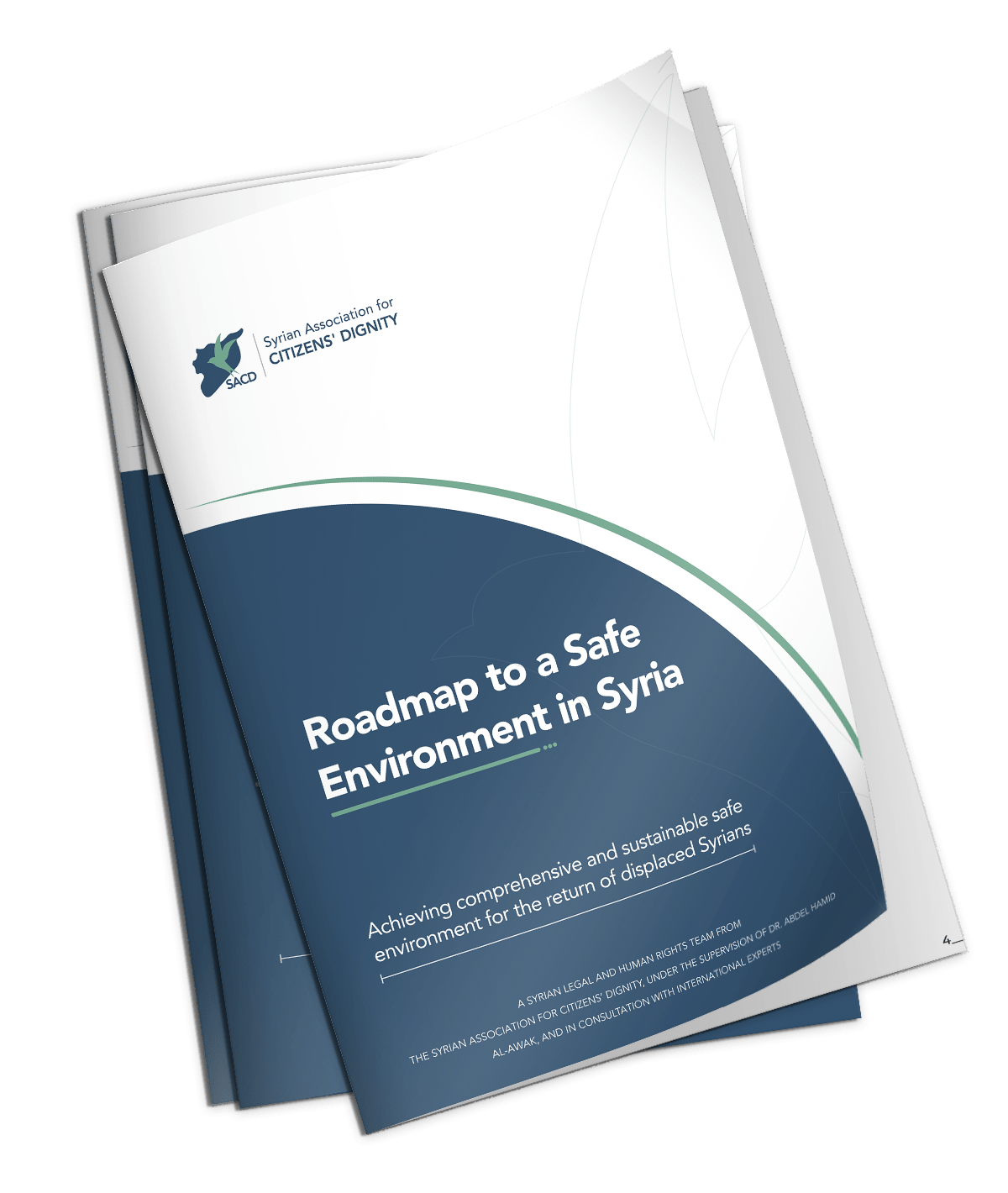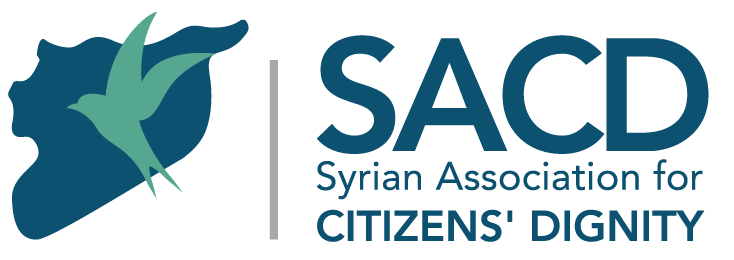Introduction
The conflict in Syria, which began with peaceful demonstrations in 2011 calling for reforms, is considered one of the most complex challenges that has faced the international community since the end of the Cold War, and there is no solution in sight. The conflict is exceptional not only in its geopolitical complexity and the fact that it has become a theatre for regional and international direct and proxy confrontations. More importantly, it is unique in the size of the losses it has generated, the dire conditions of life for millions of Syrians, the destruction of infrastructure, and the profound changes in the country’s societal and demographic structure it has caused.
Some policy-makers and international mediators have desperately searched for a quick solution or flirted with appeasing the Syrian regime and its Russian and Iranian sponsors. However, a comprehensive and sustainable political solution that fulfils Syrians’ aspirations remains the only way to end the war, restore stability to the region, and prevent the effects of the conflict from spilling over to neighbouring countries and Europe.

Any partial or improvised solutions will only prolong Syrians’ suffering and exacerbate the crisis in ways that are currently difficult to imagine. This would irreversibly destroy what remains of the country’s social cohesion.
The following fundamental facts must be taken into account in any conception of a sustainable and comprehensive solution in Syria:
- More than half of the country’s 2011 population has been displaced as a direct result of crimes against humanity and war crimes committed against Syrians, overwhelmingly by the Syrian regime and its allies.
- Iran and the Syrian regime are conducting a demographic re-engineering process in key strategic areas in Syria, which has already significantly affected the societal structure in these areas, and will have tectonic political consequences for the country’s future.
- The country’s security, military, political and economic situation prevents the safe, voluntary and dignified return of displaced Syrians. They are currently unable to enjoy and exercise their full human and citizenship rights, or to take an active part in shaping the future of their country.
Therefore, any realistic attempt to define and implement a comprehensive and sustainable political solution in Syria must address the aforementioned facts and the need to provide an effective, practical framework to return displaced Syrians to their homeland and enable them to participate in defining and implementing a political solution.
The Geneva Communique (2012) emphasised the importance of establishing a “neutral environment in which the transition can take place”. United Nations Security Council (UNSC) resolution 2254 (2015) also stressed “the critical need to build conditions for the safe and voluntary return of refugees and internally displaced persons to their home areas and the rehabilitation of affected areas”. In 2015 there were around four million Syrian refugees, and there are now more than six million refugees and almost seven million internally displaced.
More than half of Syria’s population lacks a safe environment, which has potentially devastating consequences for regional stability. Therefore, the relevant UNSC resolutions and communiques should always be interpreted based on the aspirations of the Syrian people, and not only in accordance with the interests and perspective of the parties to the conflict.
In developing a political solution in Syria, Russia’s invasion of Ukraine in February 2022 cannot be ignored. The Syrian conflict and how the international community (mis)handled it sowed the seeds of the tragedy in Ukraine. There are definitive lessons and conclusions that must become part of the foundational thinking for a sustainable and comprehensive solution in Syria.
First and foremost, the international community must abandon any illusions that Russia can play any role as a “guarantor” of any aspect of the organised return of displaced Syrians to their homes. Russia must be treated as a party to this conflict rather than a mediator. In Ukraine, Russia has implemented the policies it has practiced in Syria for the last 6 years: targeting civilians and massive forced displacement through starvation and sieges are not mere “consequences of conflict”, but tools Moscow uses to attain military and political goals. In Syria, Russia was entrusted in 2013 with the role of “guarantor” to remove and destroy the Syrian regime’s chemical weapons stockpile after the regime used chemical weapons in Ghouta in August 2013, killing approximately 1,400 civilians, including women and children. The stockpile was not fully destroyed; the Syrian regime launched more chemical attacks against civilians in the following years with at least the knowledge of the Russians.
There is no scenario in which displaced Syrians can be made to trust or accept the guarantees of the perpetrator that destroyed their homes and forcibly displaced them. The international community must consistently deal with Russia’s policies and atrocities in both Syria and Ukraine to have any credibility in the eyes of Syrians.
In recent years, a “safe environment” has become a keyword in all influential countries’ political discussions of Syria. However, despite the assertion of all parties that a safe environment is a necessary condition for achieving any component of the political solution, it has never been clearly defined; nor has a road map for its realisation been drawn up. Most importantly, Syrians have not been consulted about the conditions and determinants of a safe environment.
For more than 2 years, the Syrian Association for Citizens’ Dignity (SACD) has systematically and methodically communicated with internally displaced Syrians and refugees to understand their situation and accurately state their vision for their country’s future, and the conditions for their return to their places of origin in a safe, voluntary and dignified way.
This communication was achieved through organised and continuous campaigns of physical encounters with the displaced communities and discussions designed to develop a deep understanding of the aspirations, fears and challenges facing displaced Syrians. The SACD also conducted focus groups and surveys inside and outside Syria with several thousands of Syrians, including in areas controlled by the Syrian regime, to complete the picture of Syrians’ vision of a safe environment and the conditions for their return.
A group of Syrian and international legal and constitution experts then reviewed the outcomes of this communication with the displaced Syrian communities and influential figures inside and outside the country to arrive at this comprehensive position paper and a number of detailed annexes that provides an accurate and detailed description of the safe environment from the Syrians’ perspective, and defines a practical and pragmatic roadmap for its implementation.
The SACD’s outreach effort and experts’ discussions over the last 2 years have identified three main concerns and conundrums for displaced Syrians, a constituency comprising more than half of the population:
- The security situation and its ramifications in Syria are the main obstacle to any large-scale and definitive return.
- Returnees face a real risk of being arbitrarily detained and/or disappeared, forcibly recruited, extorted and harassed.
- War crimes and crimes against humanity were committed against Syrians with complete impunity, including the use of chemical weapons, which have lasting effects.
Displaced Syrians’ vision of a safe environment captured by the SACD is rooted in a purely human rights and humanitarian perspective, independent of any political considerations. It communicates the need to give Syrians a real and influential voice in the political discussions that will determine their fate, and recognises that any mistake in defining or implementing a safe environment will likely cost Syrians their lives and dignity.
The SACD’s position on the implementation of a safe environment is based on relevant documents and resolutions, including the Geneva Communique and Resolution 2254, as well as lessons learned from other countries that experienced similar circumstances. The SACD thoroughly studied the principles and content of relevant documents governing refugee return, as well as their implementation, to draw practical and pragmatic conclusions and establish a body of best practices.
This study did not focus on developing a theoretical definition of an ideal safe environment from a conceptual point of view. Rather, it concentrated on converting Syrians’ vision and aspirations into a concrete roadmap with precisely defined implementation procedures and phases that will eventually lead to the creation of a safe environment for the entire country and for all Syrians.
This roadmap is effectively a three-phased framework that divides the return process into three very distinct main phases, each with its own prerequisites, goals, risks, and a package of practical measures to take into account:
- Pre-return phase
- During return phase
- Post-return phase
This phased approach is driven by the complexity of the return operation when it is analysed from an operational point of view rather than from a theoretical perspective. Segmenting such a monumental undertaking is a must, because every phase has different prerequisites and objectives, and each lays the groundwork for the following phase, which has different work areas, actors, tools and results. Most importantly, each phase must gain the displaced Syrians’ confidence in the process, and demonstrate gradual yet tangible progress and a strong sense that guarantees by credible international actors are in place.
The failure to achieve a safe environment for all Syrians according to their own vision and understanding of their country’s situation will only lead to further instability and new waves of displacement—mainly to Europe and Turkey. The Norwegian Refugee Council predicted that a further 6 million Syrian refugees will be displaced over the next 10 years if the situation in the country remains as it is. According to an SACD survey conducted in 2020 approximately 82 per cent of some 1100 surveyed displaced Syrians consider a regime change to be a fundamental condition of their return. Thus given the current security and military policies enforced by the Syrian regime in the midst of an economic meltdown and the absence of a judiciary and legal framework, a safe environment for return remains a long way off.
Any viable and sustainable solution must recognise that a safe environment is an indivisible whole: it must be safe for all Syria and all the Syrians. There are currently no safe areas in the country. Although the country has been divided into de facto areas of influence, no area can be considered safe in isolation of the others.
You can download and read the full paper from the following link:


